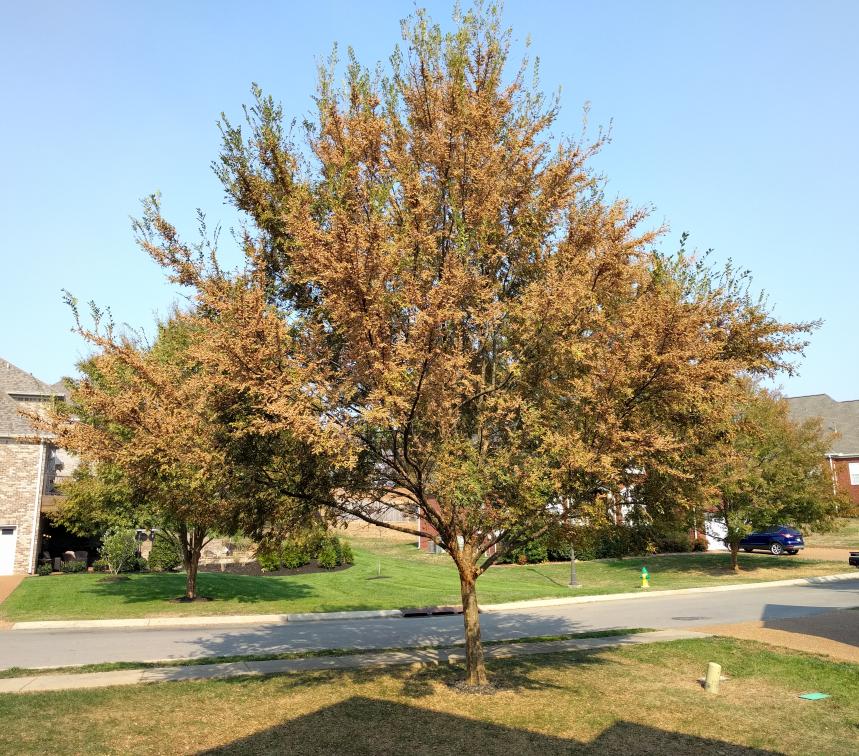I do believe you've got an Elm; Ulmus parvifolia. Chinese Elm or Lacebark Elm. This tree is far better than birch! Tough, hardy tree. Resistant to the diseases that have ravaged other Elm species.
Yours could use a bit of thinning to allow more air flow through your tree. Also a much larger circle at the base of the trunk, go ahead and make a square instead of a circle and take out the grass within that square, one side of that square should be the sidewalk. 3' or 4' square free of grass. Careful removing the sod around the shallow roots. This can be done in the early spring. Simply making a clear plastic cover to kill the grass by solarization might be easiest. Just 'cook' it enough to scrape it off the soil (a month?) Get a mulch, preferably a decomposed organic mulch or at least fine ground bark, coat the bare soil 2".
Do not let that mulch touch the tree, the bark of your tree. Keep it pulled back.
Don't fertilize or anything else until spring. Do you know if the previous owners fertilized? We can talk about your lawn in the spring, grins!
And we could walk you through a simple pruning. In the very middle of the picture there is this odd branch. Do you see that that caliper of branch is vastly different than the trunk from which it grew? That needs to be taken off, as well as that lame stump someone left. The stickiness is probably from 'honey dew'...there are no such things as 'mulching mowers' as far as I know. Do you have a single blade or two blades? What you absolutely have to have is a great gas blower! Blow the leaves into the back of your beds...thinly spread. Or compost or take them to the dump so someone else can make use of this great organic matter!
How high can you raise that deck? I always bag grass clippings instead of 'mulching'...we can talk about this in the spring. A good aerating by pulling plugs out of your lawn would be a good thing to do now. Leave the plugs right there on the lawn. Doesn't look like you have to worry about mowing again before winter. Do you know what kind of grass you have?
Maybe a good watering would be in order for the lawn as well as your tree before winter hits.
Check these pictures. Lacebark Elm




